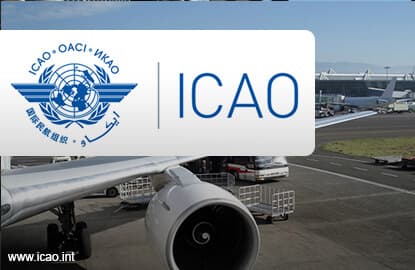
KUALA LUMPUR (Jan 17): Cloud computing plays a critical role in the management of international civil aviation, according to the International Civil Aviation Organisation’s (ICAO) chief of integrated aviation analysis Marco Merens.
Speaking at the United Nations World Data Forum in Cape Town yesterday, Merens said the Accident Notification System is a good example of how ICAO uses the cloud to collect, store, organize, analyze and ultimately share information.
The cloud refers to software and services that run on the Internet, instead of locally on a computer.
Services offered by the cloud include computer networks, servers, storage and applications. In a way, the cloud is like a central location where data can be stored and accessed from anywhere at any time, always and as long as the user has a login and password.
Data present in the cloud can then be distributed into multiple platforms to produce forecasts and analysis.
ICAO’s Integrated Aviation Analysis Section (IAA) transitioned to the cloud in light of this, as it is responsible for sharing safety related datasets and for producing analyses, based on these datasets.
“Assuming we have an accident that meets the established criteria, the Crisis Response Team at ICAO automatically receives an email and message, notifying them of the event and allowing the organisation to run a real-time accident monitoring system.
“Without the cloud, it would not have been possible to process such a great amount of information in such a short time,” he said.
Merens explained in this example, data is collected from various data feeds, citing the Aviation Herald, the Aviation Safety Network and Flight Global as examples of sources.
He said the process consists of downloading data from these feed services every three hours and storing it in the cloud.
The data is then processed through Elastic MapReduce or EMR on Amazon, a programming framework that supports the processing of large amounts of unstructured data into smaller tasks. Duplicate accident data is then removed, reports from different sources are combined and the desired data is automatically merged it into one single document or report. Such reports are generated automatically and contain real-time information.
Merens said to serve the aviation community globally, some sections at ICAO have to run complex analysis and manage big data regularly.
“Such high-velocity and high-variety information requires cost-effective and innovative server and computer infrastructures. With its growing involvement in predictive analysis, such as identifying future needs of aviation globally or the most appropriate areas to invest resources in, ICAO started to look into cloud-based solutions a few years ago.
“Widely available and found under various forms, cloud solutions allow users to take benefit from all new technologies, without the need for deep knowledge about or expertise with each one of them,” he said.
Merens said by using the cloud, ICAO eliminated the performance and reliability issues of previous on-premises systems, allowing organisation staff to focus on developing its services in a faster, better-scaled and more flexible manner than what infrastructure available in-house could provide.
He said for the International Aviation Authorities, using cloud-based solutions made it easier to experiment innovative techniques, which would not have been possible with in-house infrastructure.
He said the team’s members evolved from being co-workers to co-creators, enhancing principles of mobility and collaboration.
Users can now access real-time information anytime, anywhere, he said.
Merens said cloud computing offers mobility in more general terms, to what constitutes a changing global workforce that works from anywhere, anytime and on any device.
He said the cloud also enhances collaboration across interoperable systems and communities of practices by promoting co-authoring practices.
In addition to that, the cloud creates a secure, integrated enterprise online environment that is accessible remotely, Merens added.
Finally, cloud enterprise services are generally reliable.
“Our approach requires constant innovation, which is a good thing.
“The fact of the matter is that the cloud is the future, and sooner or later, all data-conscious organisations will have to integrate it into their architectures,” said Merens.